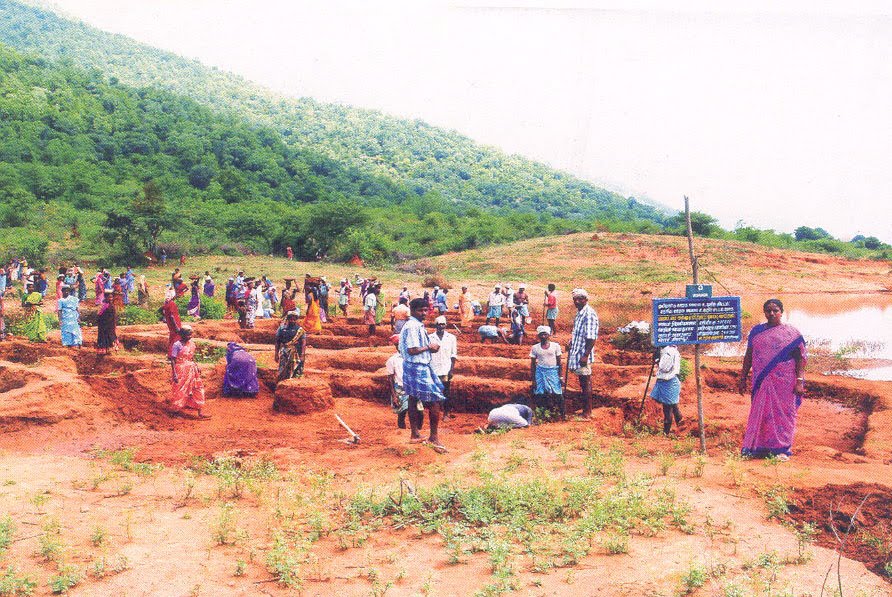Using data is a good start...Much better than useless allusions to people's grey cells (which onyl Hercule Poirot could make with some finnesse!)...
anyways..To the theory first..
I have tried explainign this (econ 101) quite a few times before, but one more time..chaanakya wrote:Poverty estimates indicate 37.5% ( going by Planning Comm data) are poor in India so you can deduce how many are out of the net cast by NREGA.
Now if you provide money (as wage and not dole) without asset creation , how could it be non inflationary that you have failed to explain with all your verbal gymnastics which points to your confusion.
1. You (andd some others here) use govt expenditure, investment and money supply inter-changeably - these are different variables, and while interconnected in some ways, are not the same....NREGA expenditure, like any other expdt of the govt, is financed out of tax revenues....All expdt, whether by govt, individual or corporate, givs rise to "money supply"...the money supply created by any expenditure will be a few times the amount of the expdt itself - how much, is dependent on the "velocity" of money...There will be money supply created by the extra expenditure arising out of income tax breaks as well..Every expense really, I guess you get the drift..Therefore, the govt does not "print" money to spend on anything, whether building a road or paying wages, not anymore in India...
2. there is NO empirical evidence anywhere in the world that says that the poor use money less "productively" than the rich..In fact there are tons of evidence on the contrary...Therefore, there is no reason to believe that somehow wages spent by NREGA workers will be spent in a manner where the velocity of money will be "higher" than the same for middle class folks with tax breaks, causing a bigger difference to inflation...
3. the "inflation" argument for NREGA lies not on the some "creation of no assets for a dole given", but on demand side equations...Of course the media doesnt know better, but what RBI actually says is that the economy is doing well, and various sectors of the society are showing increasing demand for everything, including foodgrains...among them, NREGA has been pointed out as a factor of increasing prosperity of unorganised rural labour, and their in general better wage bargaining power....In absence of adequate measures on supply side bottlenecks, the increase in demand will cause inflation - tautological, IS-LM frameworks...But the media of course took that to say: "NREGA casues inflation"!It is almost as if it is an "inflation problem" if only BPL folks with NREGA wages display higher demand for rice, while higher demand for meat-protein and processed food by the middle class financed by tax exemptions and fuel subsidies is non-inflationary!
4. The argument on the asset creation side is different..It is about the fact that if a large amount of money is being spent, then lets try and see if we can build more durable assets rather than just paying wages..Which is why they are trying to club NREGA with other programmes with a greater "capital" outlay...NREGA, I have said many times, was originally desinged as a quasi unconditional cash tranfer scheme, therefore that was the over-riding objective...
If all of this sounds to you as "verbal gymnastics", I can only ask you to first go through a good economics book to get your basics right!
Now to the data....
Not at all..Just that much of the data you posted means nothing to the discussion we are having..chaanakya wrote:You have studiously ignored the actual statistics link posted here containing NREGA data
# of works completed by itself means nothing - depends on the type of work! there might be projects running over years...If there are an estimated 5-6 crore people getting jobs in NREGA, 9 lac people not gettign job cards is a fairly small error..TO me, the parameters of the programme would be the amount of manhours of labour created, # of people who got 100 days of work, amount disbursed and % of leakages...
I have posted performance comparisons of NREGA against other legacy programmes earlier -go through them...NREGA is one of the most successful programmes ever on welfare in this country..
Does it mean that there are no leakages? Not in the least - people like Jean Dreze too are constantly loking for them..And a lot is changing - bank accounts, UID...The smarter state govts are doing a lot more...But conceptually, is it a good idea? Most of the data tends to point out towards that...
A small note about the poverty numbers...All poverty estimates, whether Planning Commission, or Arjun Sengupta, or anything else are based on the last NSSO exercise -vintage 2004..Part of the intellectual justification for NREGA came out of that...Now there are issues with NSSO data, but what is not in doubt is the presence of hundreds of millions of people living under 2 dollars/day (and hundreds of millions more that live above, but are only one drought away from poverty)....The fresh round of NSSO surveys currently on will reveal some more about the efficacy of NREGA....But macro-economic estimates of rural demand already show that NREGA is having a salutary impact on the same...Hopefully NSSO will support the same with more data...






